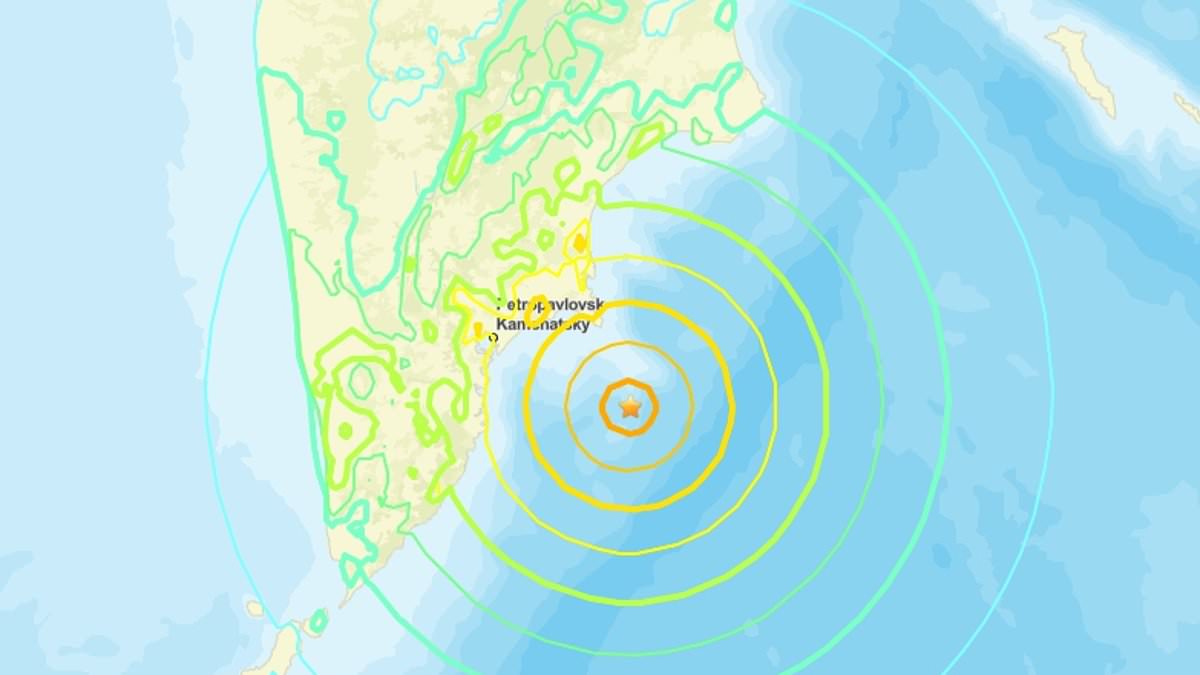It started as just another evening for millions of people across Hawaii and the U.S. West Coast—but that calm didn’t last long.
Within hours, sirens were blaring, roads were jammed, and entire communities were scrambling for higher ground.
The reason? A massive 8.8 magnitude earthquake had just struck off the coast of Russia, triggering tsunami waves that threatened coastlines all around the Pacific.
Water Begins to Recede and Panic Sets In
In Hawaii, the first signs of danger came when the ocean began pulling back from the shore—always a red flag.
That happened around 7:40 p.m. local time (1:40 a.m. EST), and not long after, the first tsunami waves rolled in. By 8:20 p.m. local time, water levels in places like Haleiwa on Oahu’s north shore had already risen more than four feet and were climbing fast.
Officials issued urgent evacuation orders, and the Oahu Emergency Management Agency warned locals: “Tsunami waves are currently impacting Hawaii. Take action NOW!”
California and Oregon Also Under Threat
The danger wasn’t limited to Hawaii. Tsunami warnings stretched up and down the U.S. West Coast.
Waves began arriving at the California coast just before midnight, hitting Crescent City and Humboldt Bay.
Local authorities acted fast—closing Southern California beaches and sending LAPD helicopters over the coast, blasting out evacuation messages.
In Oregon, emergency services stayed on alert while tsunami advisories remained active.
Chaos on the Roads and in the Skies
In Honolulu, highways were packed with bumper-to-bumper traffic as residents tried to flee low-lying areas.
On Oahu, the U.S. Army and Navy stepped in to help with evacuations, opening Kolekole Pass and parts of Schofield Barracks to assist.
Still, at least one serious traffic accident was reported during the scramble.
Maui’s Kahului Airport canceled all flights, and passengers were left sheltering inside terminals.
Hilo International Airport also suspended commercial flights.
A Presidential Warning and a Governor’s Plea
As the situation escalated, former President Donald Trump posted a message urging Americans to “STAY STRONG AND STAY SAFE.”
Hawaii’s Governor Josh Green declared a state of emergency and addressed the public in the early hours, saying, “We pray that we won’t lose any loved ones.”
While he reported some initial relief that there hadn’t been a “wave of consequence” so far, he warned people not to let their guard down.
“We want to go another couple of hours,” he added, referencing the risk of follow-up waves.
Oprah Opens Her Private Road for Evacuees
In a show of support, Oprah Winfrey—who owns property in Maui—reportedly opened up her private road to help with evacuations.
Her spokesperson told CNN they coordinated directly with FEMA and local law enforcement to provide access.
Russia Feels the Earthquake’s Impact First
Back where the quake began—about 84 miles southeast of Kamchatka—buildings shook violently.
In the Russian city of Petropavlovsk-Kamchatsky, a kindergarten collapsed, several people were injured, and a woman was hurt inside a newly constructed airport terminal.
According to Russia’s regional health minister, Oleg Melnikov, many injuries came from people panicking and running.
Some even jumped from buildings in fear. Thankfully, no fatalities had been reported as of early Wednesday.
Japanese Authorities on High Alert
Japan was also placed on tsunami watch, and evacuations were ordered in several coastal areas.
Over 1.9 million residents were told to move to safety, including workers at the Fukushima nuclear plant.
Fortunately, the Nemuro Hanasaki port reported only a one-foot wave, and no injuries had been reported at the time.
Expert Warnings and Preparedness Advice
The Pacific Tsunami Warning Center cautioned that some areas, especially the Northwestern Hawaiian Islands, could see waves reaching 10 feet above normal tide levels.
Meteorologists and emergency responders urged people to evacuate immediately and avoid beaches, harbors, and bays.
Even waves that seem “small” can be deadly—experts say just six inches of fast-moving water can knock a person off their feet, while two feet can carry away vehicles.
“If you’re in a boat and can’t make it back to shore,” meteorologist Matthew Cappucci said, “sail into deeper waters where the tsunami energy spreads out.”
Emotional Toll Still Fresh from Past Disasters
Residents in Hawaii described the emotional strain of facing another life-threatening disaster, with many still traumatized from the devastating 2023 wildfires.
“Every hour, the sirens go off again, and it’s terrifying,” one Honolulu resident said.
Global Ripple Effect from a Rare Earthquake
Tuesday’s quake now stands as the sixth most powerful ever recorded.
It was the strongest quake globally in 14 years—since the 9.1 magnitude disaster that struck Japan in 2011 and left nearly 20,000 dead or missing.
For context, a similar 8.8 quake in Ecuador in 1906 killed 1,500 people, while an 8.8 quake in Chile in 2010 killed over 500 and destroyed hundreds of thousands of homes.
The earthquake also follows a string of recent tremors in the region, including a 7.4 magnitude quake just a week ago.
The Kamchatka Peninsula sits on the Pacific Ring of Fire—an area well-known for intense geological activity.
The Situation Isn’t Over Yet
While Hawaii’s governor expressed cautious optimism early Wednesday morning, officials emphasized that the situation remains fluid.
Aftershocks were still being reported in Russia, and tsunami activity could continue to unfold.
Authorities across the Pacific continue to monitor the waves, issue advisories, and prepare for further emergency responses.
For now, the message remains clear: stay alert, follow evacuation orders, and wait for the official all-clear.
